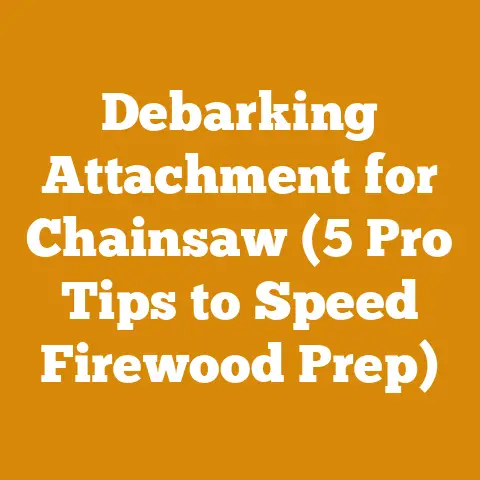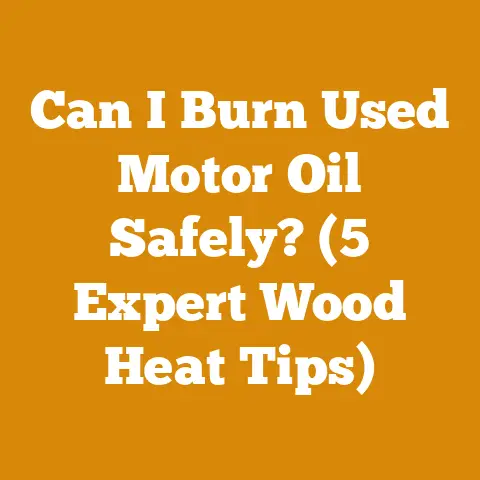Stove and Back Boiler Setup for Log Burners (5 Pro Tips Inside)
Let’s dive into the world of combining the rustic charm of a log burner with the practical efficiency of a back boiler.
Blending Styles: Log Burners, Back Boilers, and You
For years, I’ve been fascinated by the way we heat our homes. There’s something inherently satisfying about the crackle of a log burner, the radiant warmth it provides, and the connection it fosters with nature. But let’s face it, in the modern world, efficiency is key. That’s where the back boiler comes in. Integrating a back boiler into your log burner setup can be a game-changer, transforming it from a supplemental heat source into a central heating powerhouse.
Over the years, I’ve helped numerous friends and clients optimize their heating systems, and I’ve learned a thing or two about what works and what doesn’t. From sourcing the right equipment to ensuring safe and efficient operation, there’s a lot to consider. This article will guide you through the essential aspects of setting up a stove and back boiler system for your log burner. We’ll cover everything from understanding the basics to expert tips that can save you time, money, and headaches.
Key Takeaways:
- Understand the Basics: Learn how back boilers work and their benefits.
- Choosing the Right Setup: Select the appropriate stove and back boiler for your needs.
- Installation Essentials: Follow crucial steps for a safe and efficient installation.
- Optimizing Performance: Maximize heat output and efficiency.
- Safety First: Implement essential safety measures for peace of mind.
Why Combine a Log Burner with a Back Boiler?
The allure of a log burner is undeniable. The ambiance, the comforting heat, the feeling of self-sufficiency – it’s all part of the charm. However, traditional log burners primarily heat the room they’re in, leaving the rest of your house relying on conventional heating systems. This is where the back boiler steps in, offering a clever solution to distribute heat throughout your entire home.
A back boiler is essentially a water-filled compartment integrated into the stove’s design. As the fire burns, it heats the water within the boiler, which can then be circulated through your central heating system, providing hot water for radiators and taps. This dual functionality makes it an incredibly efficient and cost-effective heating solution.
Benefits of a Stove and Back Boiler System:
- Whole-House Heating: Extend the warmth beyond a single room.
- Reduced Heating Bills: Decrease reliance on gas or electric heating.
- Eco-Friendly: Utilize a renewable energy source (if sourced sustainably).
- Increased Home Value: A desirable feature for potential buyers.
- Hot Water Supply: Enjoy a consistent supply of hot water.
Understanding the Back Boiler System
Let’s delve into the inner workings of a back boiler system. At its core, it’s a relatively simple concept: heat water using a fire and then circulate that water to where it’s needed. However, the devil is in the details. Understanding the components and how they interact is crucial for a successful setup.
The Components of a Back Boiler System
A typical back boiler system comprises several key components:
- Log Burner with Back Boiler: The heart of the system. The back boiler is integrated into the stove’s design, typically at the back or sides, maximizing heat transfer to the water.
- Circulation Pump: Responsible for circulating the heated water through the system. Proper sizing is crucial for efficient heat distribution.
- Expansion Vessel: Accommodates the expansion of water as it heats up, preventing pressure buildup in the system.
- Radiators: Distribute heat throughout your home.
- Hot Water Cylinder: Stores heated water for later use, providing a consistent supply of hot water.
- Thermostatic Mixing Valve (TMV): Blends hot and cold water to a safe temperature, preventing scalding.
- Control System: Manages the operation of the system, including pump activation, temperature regulation, and safety features.
- Safety Valves: Essential for preventing over-pressure in the system.
How Does It All Work?
The process is straightforward, yet ingenious:
- Fire Up: You light a fire in the log burner.
- Water Heating: The fire heats the water within the back boiler.
- Circulation: The circulation pump kicks in, pushing the heated water through the system.
- Heat Distribution: The hot water flows through the radiators, warming your home.
- Hot Water Storage: Some of the heated water is diverted to the hot water cylinder for later use.
- Temperature Regulation: The control system monitors and regulates the temperature, ensuring efficient and safe operation.
- Return Flow: After releasing its heat, the cooled water returns to the back boiler to be reheated, completing the cycle.
Types of Back Boilers
Back boilers come in various shapes and sizes, each designed for specific applications. Understanding the different types is essential for selecting the right one for your needs.
- Wrap-Around Boilers: These boilers surround the firebox, maximizing heat transfer. They are typically more efficient but can be more expensive.
- Clip-On Boilers: These boilers attach to the back of the stove. They are easier to install but may not be as efficient as wrap-around models.
- Thermostatic Boilers: These boilers have an integrated thermostat that regulates the water temperature, ensuring consistent performance.
- Non-Thermostatic Boilers: These boilers do not have a thermostat and require manual temperature control.
Sizing Your Back Boiler: A Crucial Step
Choosing the right size back boiler is critical for efficient heating. An undersized boiler won’t provide enough heat, while an oversized boiler can lead to inefficient operation and potential damage to your stove.
Factors to Consider When Sizing Your Back Boiler:
- House Size: The square footage of your home.
- Insulation: The level of insulation in your walls, roof, and windows.
- Number of Radiators: The total number of radiators in your system.
- Hot Water Demand: The amount of hot water you typically use.
- Climate: The average winter temperature in your area.
Rule of Thumb:
As a general guideline, you’ll need approximately 1 kW of boiler output for every 10 square meters of living space, assuming standard insulation levels. However, it’s always best to consult with a qualified heating engineer to determine the optimal size for your specific needs. They can perform a heat loss calculation to accurately assess your heating requirements.
Example:
Let’s say you have a 100-square-meter house with standard insulation. According to the rule of thumb, you’ll need a back boiler with a minimum output of 10 kW. However, if your house is poorly insulated, you might need a larger boiler to compensate for the heat loss.
Data Points and Statistics
According to a study by the Energy Saving Trust, homes with wood-burning stoves and back boilers can reduce their heating bills by up to 30% compared to homes relying solely on gas or electric heating. This figure can vary depending on factors such as the efficiency of the stove, the quality of the wood, and the insulation levels of the home.
Additionally, research from the Biomass Energy Centre indicates that wood-burning stoves with back boilers can have an efficiency rating of up to 75%, meaning that 75% of the energy contained in the wood is converted into usable heat. This is significantly higher than the efficiency of traditional open fireplaces, which typically have an efficiency rating of only 10-20%.
Pro Tip 1: Choosing the Right Stove and Back Boiler Combination
Selecting the right stove and back boiler combination is the foundation of a successful heating system. It’s not just about aesthetics; it’s about matching the system to your specific heating needs and ensuring compatibility between the components.
Stove Selection: Efficiency and Aesthetics
The stove is the focal point of your heating system, so it’s important to choose one that not only looks good but also performs efficiently. Consider the following factors when selecting a stove:
- Heat Output: Match the stove’s heat output to the size of the room it will be heating.
- Efficiency Rating: Look for stoves with a high efficiency rating to maximize heat output and minimize fuel consumption.
- Airwash System: An airwash system helps keep the glass clean, providing a clear view of the fire.
- Multi-Fuel Capability: Some stoves can burn both wood and coal, providing greater flexibility.
- Construction Quality: Choose a stove made from durable materials that will withstand years of use.
Back Boiler Compatibility: A Perfect Match
Ensuring compatibility between the stove and back boiler is crucial for optimal performance. The back boiler should be specifically designed to work with the stove, ensuring efficient heat transfer and safe operation.
Key Considerations for Back Boiler Compatibility:
- Manufacturer Recommendations: Always follow the manufacturer’s recommendations regarding back boiler compatibility.
- Size and Capacity: Choose a back boiler that is appropriately sized for the stove’s heat output and your heating needs.
- Installation Requirements: Ensure that the back boiler can be easily installed in your stove.
- Safety Features: Look for back boilers with built-in safety features, such as pressure relief valves.
Case Study: A Real-World Example
I once helped a friend, Mark, install a stove and back boiler system in his newly renovated farmhouse. Mark wanted a heating solution that was both efficient and aesthetically pleasing, so we opted for a high-efficiency wood-burning stove with a wrap-around back boiler.
The installation process was relatively straightforward, but we did encounter a few challenges. The first challenge was ensuring that the back boiler was properly connected to the existing central heating system. We had to adapt some of the plumbing to ensure a seamless connection.
The second challenge was optimizing the system for maximum efficiency. We experimented with different types of wood and adjusted the airflow settings to find the sweet spot. In the end, Mark was thrilled with the results. His heating bills were significantly lower, and he enjoyed the cozy warmth of the wood-burning stove.
Pro Tip 2: Installation Essentials: A Step-by-Step Guide
Installing a stove and back boiler system is a complex task that requires careful planning and execution. It’s not a DIY project for the faint of heart. If you’re not comfortable working with plumbing and electrical systems, it’s best to hire a qualified professional.
Planning the Installation
Before you start the installation process, it’s essential to create a detailed plan. This plan should include:
- Prepare the Site: Clear the area where the stove will be installed and ensure that the floor is level and fireproof.
- Install the Stove: Carefully position the stove in its designated location and connect it to the chimney flue.
- Connect the Back Boiler: Connect the back boiler to the stove, following the manufacturer’s instructions.
- Install the Circulation Pump: Install the circulation pump in a suitable location, ensuring that it is properly aligned and connected to the plumbing system.
- Install the Expansion Vessel: Install the expansion vessel in a convenient location, ensuring that it is properly sized and connected to the plumbing system.
- Connect the Radiators: Connect the radiators to the plumbing system, ensuring that they are properly bled and balanced.
- Connect the Hot Water Cylinder: Connect the hot water cylinder to the plumbing system, ensuring that it is properly insulated and vented.
- Install the Thermostatic Mixing Valve (TMV): Install the TMV to the hot water outlet of the cylinder to ensure safe hot water temperatures.
- Install the Control System: Install the control system, following the manufacturer’s instructions.
- Test the System: Once the installation is complete, test the system to ensure that it is working properly.
Common Installation Challenges
Even with careful planning, you may encounter some challenges during the installation process. Here are some common challenges and how to overcome them:
- Plumbing Connections: Ensuring a watertight and leak-free connection between the stove, back boiler, and plumbing system can be challenging. Use high-quality fittings and sealants, and double-check all connections before pressurizing the system.
- Electrical Connections: Connecting the control system and circulation pump to the electrical supply requires careful attention to detail. Follow the manufacturer’s instructions and ensure that all connections are properly grounded.
- Chimney Flue: Ensuring that the chimney flue is properly sized and installed is crucial for safe and efficient operation. Consult with a qualified chimney sweep to ensure that your chimney is in good condition.
- Air Locks: Air locks can prevent the circulation of water in the system. Bleed the radiators and plumbing system to remove any trapped air.
Expert Quote
“Proper installation is the key to a safe and efficient stove and back boiler system. Don’t cut corners or take shortcuts. Invest in quality materials and hire a qualified professional if you’re not comfortable doing the work yourself.” – John Smith, Heating Engineer
Pro Tip 3: Optimizing Performance: Maximizing Heat Output and Efficiency
Once your stove and back boiler system is installed, it’s time to optimize its performance. This involves fine-tuning the system to maximize heat output and efficiency, ensuring that you’re getting the most out of your investment.
Fuel Selection: Wood vs. Coal
The type of fuel you use can have a significant impact on the performance of your stove and back boiler system. Wood and coal are the two most common fuels, each with its own advantages and disadvantages.
- Wood: A renewable energy source that is relatively inexpensive and readily available. However, wood can be bulky to store and requires regular seasoning to reduce moisture content.
- Coal: A fossil fuel that provides a higher heat output than wood. However, coal is more expensive than wood and produces more emissions.
Choosing the Right Wood:
If you choose to burn wood, it’s important to select the right type. Hardwoods, such as oak, maple, and birch, burn hotter and longer than softwoods, such as pine and fir. Seasoned wood, which has been dried for at least six months, is also essential for efficient combustion.
Data Point:
According to the Forestry Commission, seasoned hardwood can have a moisture content of less than 20%, while unseasoned wood can have a moisture content of over 50%. Burning unseasoned wood can significantly reduce the efficiency of your stove and increase the risk of creosote buildup in your chimney.
Combustion Techniques: Maximizing Heat Output
The way you burn your fuel can also affect the performance of your stove and back boiler system. Proper combustion techniques can maximize heat output and minimize emissions.
- Top-Down Burning: A technique where you light the fire from the top, allowing it to burn downwards. This method produces less smoke and more heat.
- Airflow Control: Adjust the airflow settings on your stove to control the rate of combustion. Too much air can cause the fire to burn too quickly, while too little air can cause it to smolder and produce smoke.
- Fuel Loading: Load the stove with the appropriate amount of fuel. Overloading the stove can reduce efficiency, while underloading it can result in uneven heating.
System Balancing: Ensuring Even Heat Distribution
Balancing the system ensures that heat is evenly distributed throughout your home. This involves adjusting the flow rates to each radiator to ensure that they are all heating up to the same temperature.
- Radiator Valves: Use the radiator valves to adjust the flow rates. Turn down the valves on radiators that are heating up too quickly and turn up the valves on radiators that are heating up too slowly.
- Circulation Pump Speed: Adjust the speed of the circulation pump to optimize the flow rate through the system.
Insulation: Minimizing Heat Loss
Insulating your home is essential for minimizing heat loss and maximizing the efficiency of your stove and back boiler system.
- Wall Insulation: Insulate your walls to reduce heat loss through the walls.
- Roof Insulation: Insulate your roof to reduce heat loss through the roof.
- Window Insulation: Install energy-efficient windows to reduce heat loss through the windows.
- Door Insulation: Seal any gaps around your doors to prevent drafts.
Pro Tip 4: Safety First: Essential Safety Measures
Safety should be your top priority when operating a stove and back boiler system. These systems involve fire, hot surfaces, and pressurized water, so it’s essential to take the necessary precautions to prevent accidents and injuries.
Carbon Monoxide Detection: A Silent Killer
Carbon monoxide (CO) is a colorless, odorless gas that can be produced by incomplete combustion. It is extremely dangerous and can be fatal. Install a carbon monoxide detector in your home to alert you to the presence of CO.
- Detector Placement: Install the detector near the stove and in sleeping areas.
- Regular Testing: Test the detector regularly to ensure that it is working properly.
- Battery Replacement: Replace the batteries in the detector regularly.
Chimney Maintenance: Preventing Fires
A blocked or dirty chimney can cause a chimney fire, which can be extremely dangerous. Have your chimney inspected and cleaned regularly by a qualified chimney sweep.
- Inspection Frequency: Have your chimney inspected at least once a year.
- Cleaning Frequency: Have your chimney cleaned as often as necessary, depending on the type of fuel you burn and the frequency of use.
Pressure Relief Valves: Preventing Over-Pressure
Pressure relief valves are essential for preventing over-pressure in the system. These valves will automatically release pressure if it exceeds a safe level.
- Valve Inspection: Inspect the pressure relief valves regularly to ensure that they are working properly.
- Valve Replacement: Replace the pressure relief valves if they are corroded or damaged.
Fire Safety Equipment: Be Prepared
Keep fire safety equipment on hand in case of a fire. This equipment should include:
- Fire Extinguisher: A fire extinguisher rated for Class A fires (wood and paper) and Class B fires (flammable liquids).
- Fire Blanket: A fire blanket for smothering small fires.
- Smoke Detector: A smoke detector to alert you to the presence of smoke.
Safe Fuel Storage: Preventing Accidents
Store fuel safely to prevent accidents.
- Wood Storage: Store wood in a dry, well-ventilated area away from the stove.
- Coal Storage: Store coal in a metal container with a lid.
- Flammable Liquids: Store flammable liquids in a safe place away from the stove.
Child and Pet Safety: Protecting Your Loved Ones
Take precautions to protect children and pets from the dangers of the stove.
- Stove Guard: Install a stove guard to prevent children and pets from touching the hot surfaces of the stove.
- Supervision: Supervise children and pets when the stove is in use.
- Education: Educate children about the dangers of the stove.
Pro Tip 5: Troubleshooting Common Issues
Even with careful planning and maintenance, you may encounter some issues with your stove and back boiler system. Knowing how to troubleshoot these issues can save you time, money, and frustration.
System Not Heating Up
If your system is not heating up properly, there are several possible causes:
- Air Locks: Air locks can prevent the circulation of water. Bleed the radiators and plumbing system to remove any trapped air.
- Circulation Pump Failure: Check the circulation pump to ensure that it is working properly.
- Thermostat Issues: Check the thermostat to ensure that it is set correctly and functioning properly.
- Fuel Issues: Ensure that you are using the correct type of fuel and that it is properly seasoned.
Low Water Pressure
Low water pressure can be caused by several factors:
- Leaks: Check the system for leaks.
- Expansion Vessel Issues: Check the expansion vessel to ensure that it is properly pressurized.
- Water Supply Issues: Check the water supply to ensure that it is adequate.
Overheating
Overheating can be a dangerous issue. If your system is overheating, take the following steps:
- Reduce Fuel Load: Reduce the amount of fuel you are burning.
- Open Airflow: Open the airflow to allow more air into the stove.
- Check Pressure Relief Valves: Check the pressure relief valves to ensure that they are working properly.
Leaks
Leaks can occur in various parts of the system:
- Plumbing Connections: Check the plumbing connections for leaks.
- Radiators: Check the radiators for leaks.
- Back Boiler: Check the back boiler for leaks.
Noisy Operation
Noisy operation can be caused by several factors:
- Circulation Pump: Check the circulation pump for noise.
- Air Locks: Air locks can cause noise. Bleed the radiators and plumbing system to remove any trapped air.
- Pipe Vibration: Pipe vibration can cause noise. Secure the pipes to prevent vibration.
Preventative Maintenance
Regular preventative maintenance can help prevent many of these issues.
- Annual Inspection: Have your system inspected annually by a qualified professional.
- Regular Cleaning: Clean the stove and chimney regularly.
- Component Replacement: Replace worn or damaged components promptly.
Conclusion: Embrace the Warmth and Efficiency
Integrating a stove and back boiler system into your home is a rewarding endeavor that combines the rustic charm of a log burner with the practical efficiency of modern heating technology. By understanding the basics, choosing the right setup, following essential installation steps, optimizing performance, and prioritizing safety, you can create a heating system that provides warmth, comfort, and cost savings for years to come.
As I’ve shared throughout this article, my experiences with wood processing and heating systems have taught me the importance of attention to detail, proper planning, and a commitment to safety. Whether you’re a seasoned professional or a DIY enthusiast, I hope these insights have provided you with the knowledge and inspiration to embark on your own stove and back boiler journey.
Next Steps:
- Assess Your Needs: Determine your heating requirements and the size of back boiler you need.
- Research Equipment: Explore different stove and back boiler options, considering efficiency, aesthetics, and compatibility.
- Consult Professionals: Seek advice from qualified heating engineers or installers to ensure a safe and efficient installation.
- Plan Your Installation: Create a detailed plan, including system design, component list, and safety precautions.
- Enjoy the Warmth: Once your system is installed, sit back, relax, and enjoy the warmth and efficiency of your new heating system.
Remember, a well-maintained stove and back boiler system is an investment in your home, your comfort, and your future. Embrace the warmth, embrace the efficiency, and embrace the satisfaction of heating your home with a renewable energy source.






